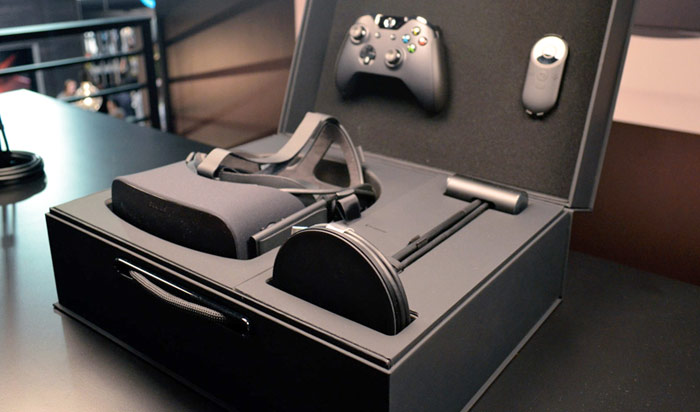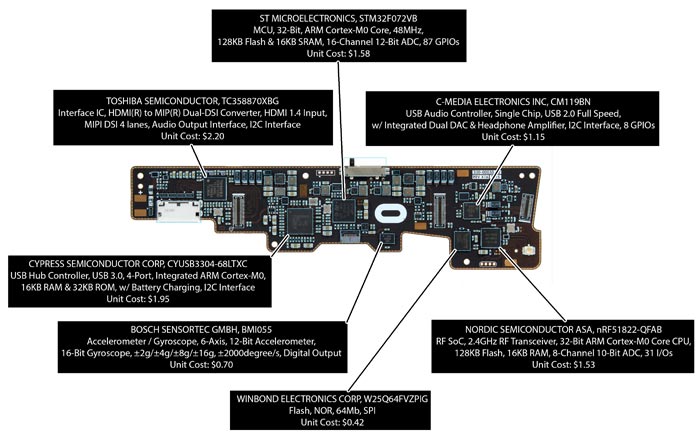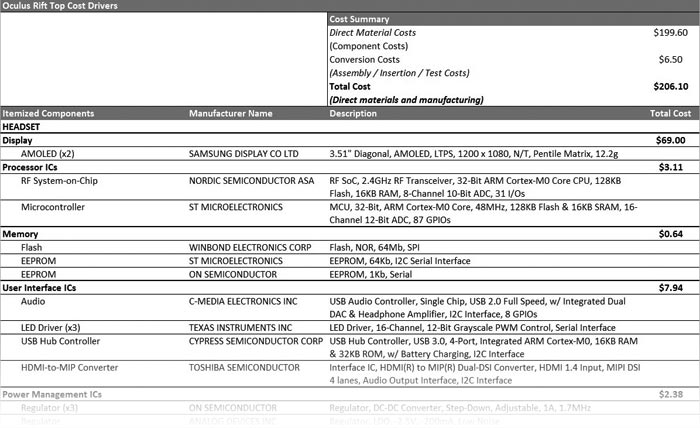Back when we started to hear the first news about the consumer version of the Oculus Rift VR headset we expected retail prices to be lower than they turned out to be. In 2014 Oculus CEO Brendan Iribe suggested that his firm, thanks to the resources and wealth of new owners Facebook, would likely sell the HMD at "the lowest cost possible", aiming for mass market penetration.

Even on the first day of pre-orders Oculus didn't reveal the price of the Rift until the last minute. For our pre-availability report we had been tipped about a price 'upwards of US$300'. The truth was double that - $600 plus shipping. For this price you got the headset, a sensor, and an Xbox One wireless controller – necessary as Oculus has yet to release its own controllers.

A new teardown by market researchers IHS reveals that all the components in an Oculus Rift boxed retail pack, including the headset, a sensor, and an Xbox One wireless controller costs under $200 for the parts alone. In the report, published a few days ago it said the complete bill of materials (BOM) is $199.60. To this you have to add factory costs like assembly which add up to about $6.50 per shipping unit.

Of all the components in your Oculus Rift box, it is of course the headset itself which costs the most to make, nearly $140 according to the teardown. Meanwhile the cost of the Xbox One controller, to Oculus, is put at $18.00 but you have to add $6.25 for its necessary wireless adapter. Drilling down further it is the twin Samsung 1200 x 1080 pixel AMOLED displays in the HMD that are its most expensive components, the pair of them cost $69.

While it's interesting to see that Oculus sells its HMD consumer pack for about three times the cost of production, one must not ignore the price of hardware R&D, software development, and the host of other costs facing such a company.
IHS published a fully detailed costs breakdown table, with much more detail than my above cropped version, which you can look through on their website.













